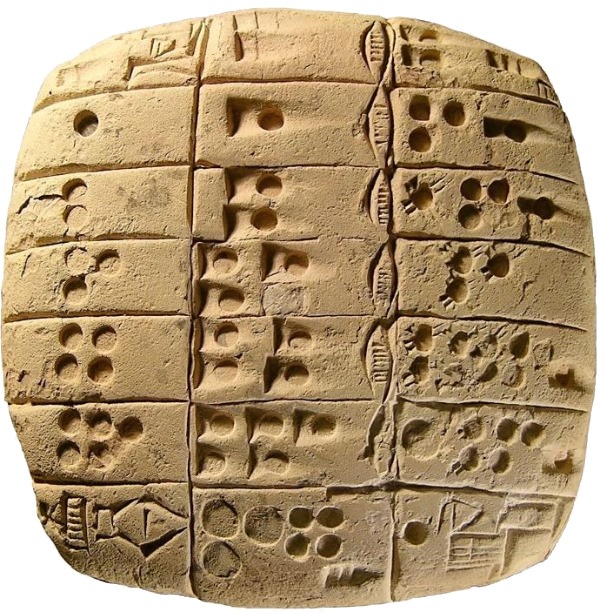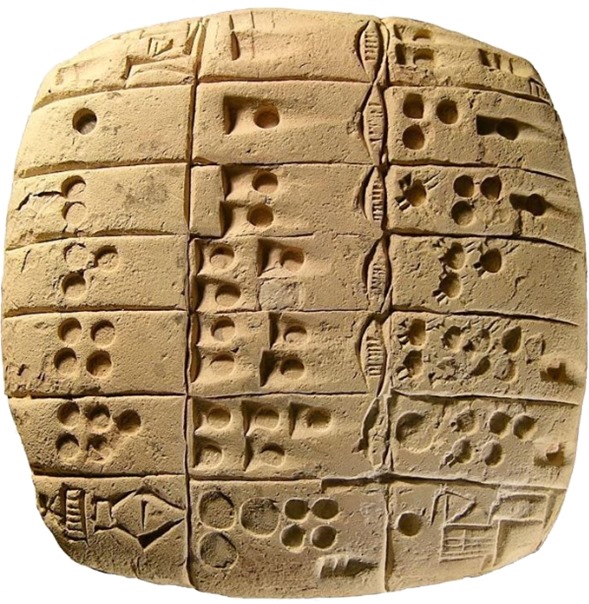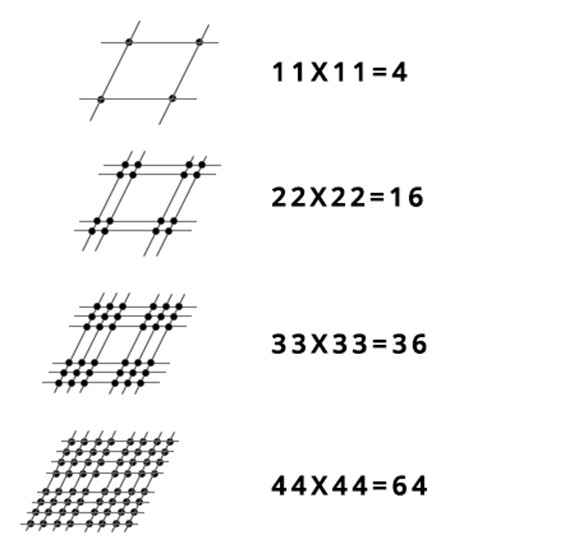One of the most popular math equation puzzles on social media is interesting because it doesn’t have one correct answer and it illustrates the nature of a solution divergence.
Here is an example. The following two problems can be solved correctly regardless if we use sum of the digits in the product or product of the sum of digits methods:
Set 1: 11×11=4
Set 2: 22×22=16
Set 3: 33×33=?
For first set
Method 1 11×11=121 then summing the digits in the products give us 1+2+1=4
Method 2 (1+1) x (1+1) = 4
and for second set
Method 1 22×22=484 then summing the digits in the product gives us 4+8+4=16
Method 2 (2+2) x (2+2) = 16
But when it comes to the next set of 33×33=? each solution diverges and will yield two different results (see result bellow for method 1 and 2).
Method 1 (sum of the digits in the product) it is: 33×33=18
33×33=1089 or 1+0+8+9= 18
Method 2 (product of the sum of digits) it is: 33×33=36
(3+3) x (3+3) = (6) x (6)=36
Here is a graphic solution for method 2
Here are the solution for the first 40 sets for each method.
|
Method 1 |
Method 2 |
|||||
|
11 |
11 |
121 |
4 |
11 |
11 |
4 |
|
22 |
22 |
484 |
16 |
22 |
22 |
16 |
|
33 |
33 |
1089 |
18 |
33 |
33 |
36 |
|
44 |
44 |
1936 |
19 |
44 |
44 |
64 |
|
55 |
55 |
3025 |
10 |
55 |
55 |
100 |
|
66 |
66 |
4356 |
18 |
66 |
66 |
144 |
|
77 |
77 |
5929 |
25 |
77 |
77 |
196 |
|
88 |
88 |
7744 |
22 |
88 |
88 |
256 |
|
99 |
99 |
9801 |
18 |
99 |
99 |
324 |
|
110 |
110 |
12100 |
4 |
110 |
110 |
400 |
|
121 |
121 |
14641 |
16 |
121 |
121 |
484 |
|
132 |
132 |
17424 |
18 |
132 |
132 |
576 |
|
143 |
143 |
20449 |
19 |
143 |
143 |
676 |
|
154 |
154 |
23716 |
19 |
154 |
154 |
784 |
|
165 |
165 |
27225 |
18 |
165 |
165 |
900 |
|
176 |
176 |
30976 |
25 |
176 |
176 |
1024 |
|
187 |
187 |
34969 |
31 |
187 |
187 |
1156 |
|
198 |
198 |
39204 |
18 |
198 |
198 |
1296 |
|
209 |
209 |
43681 |
22 |
209 |
209 |
1444 |
|
220 |
220 |
48400 |
16 |
220 |
220 |
1600 |
|
231 |
231 |
53361 |
18 |
231 |
231 |
1764 |
|
242 |
242 |
58564 |
28 |
242 |
242 |
1936 |
|
253 |
253 |
64009 |
19 |
253 |
253 |
2116 |
|
264 |
264 |
69696 |
36 |
264 |
264 |
2304 |
|
275 |
275 |
75625 |
25 |
275 |
275 |
2500 |
|
286 |
286 |
81796 |
31 |
286 |
286 |
2704 |
|
297 |
297 |
88209 |
27 |
297 |
297 |
2916 |
|
308 |
308 |
94864 |
31 |
308 |
308 |
3136 |
|
319 |
319 |
101761 |
16 |
319 |
319 |
3364 |
|
330 |
330 |
108900 |
18 |
330 |
330 |
3600 |
|
341 |
341 |
116281 |
19 |
341 |
341 |
3844 |
|
352 |
352 |
123904 |
19 |
352 |
352 |
4096 |
|
363 |
363 |
131769 |
27 |
363 |
363 |
4356 |
|
374 |
374 |
139876 |
34 |
374 |
374 |
4624 |
|
385 |
385 |
148225 |
22 |
385 |
385 |
4900 |
|
396 |
396 |
156816 |
27 |
396 |
396 |
5184 |
|
407 |
407 |
165649 |
31 |
407 |
407 |
5476 |
|
418 |
418 |
174724 |
25 |
418 |
418 |
5776 |
|
429 |
429 |
184041 |
18 |
429 |
429 |
6084 |
|
440 |
440 |
193600 |
19 |
440 |
440 |
6400 |
It is interesting to note the series growth patterns for each method. Where in method 1, the values tend to cluster around a range of several values (see pattern for 30K solutions), in method 2 the growth is polynomial.
© Copyright 2017 Yaacov Apelbaum, All Rights Reserved.





